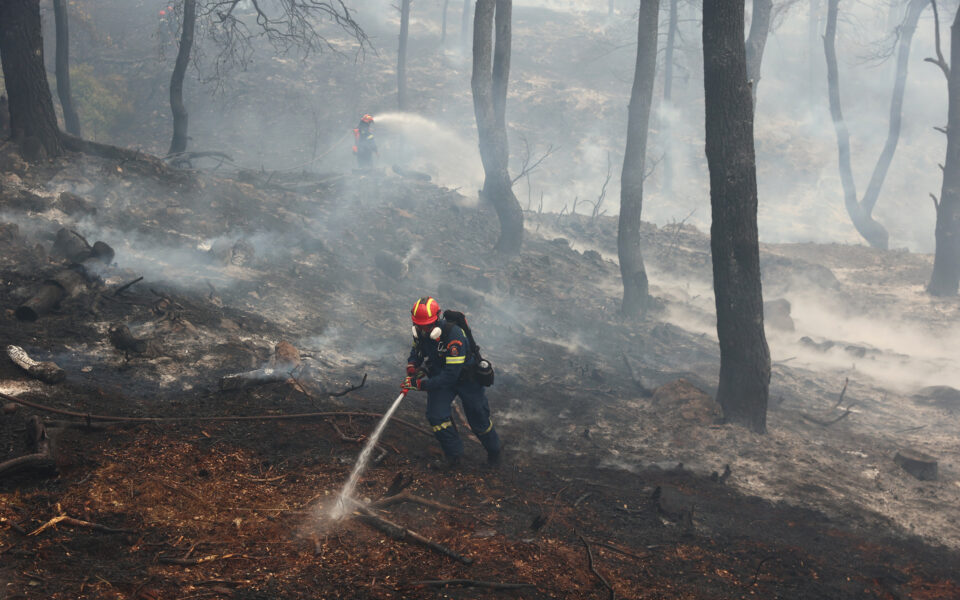Forest fires still raging in November
Weather conditions are making the fall season more prone to outbreaks, experts note

The number of fires in recent days may not seem a whole lot when compared to August, but the fact they are taking place in November is unusual.
There were 39 agroforestry fires on Monday, 30 the day before and 55 on Saturday.
The fires didn’t get very large, but that doesn’t mean that strong firefighting forces weren’t mobilized.
In the area of Karystos on Evia, for example, two villages (Prinia and Amygdalia) were evacuated on Saturday, as the fire was “uncontrollable” with winds reaching 9 Beaufort.
The fires in Vromoneri in Pelion, Arsinoi in Messinia and Ano Doliana in Arcadia, to name but a few, each required the intervention of more than 10 fire engines, dozens of firefighters and at least two aerial means.
The occurrence of several fires in agroforestry areas in November has become more frequent in recent years.
“This is a trend linked to climate change, which creates more favorable conditions for the spread of forest fires,” fire meteorologist Thodoris Giannaros, a researcher at the National Observatory of Athens, tells Kathimerini.
The conclusions of his research carried out with Georgios Papavasiliou have been published in the journal Agricultural and Forest Meteorology.
The two researchers examined 40 years of data for all of Europe, with a focus on the Mediterranean region.
The study presents evidence that “strongly suggests that extreme weather events associated with fire occurrence in Europe have become more frequent in recent decades, while affecting larger and larger areas and occurring earlier and later in the fire season.”
“Either at the beginning, in April/May, or at the end in September/October. Also, in summer [June to August], extreme fire weather conditions are increasingly common in Southern Europe, covering more days of the summer,” he notes.
“In autumn we see more and more often extreme fire weather conditions in areas of Greece. That is, high temperatures, low relative humidity, drought. Forest fuels, in such situations, become more flammable,” he explains.
“There should be constant monitoring of fire weather conditions. Of course, as conditions become more and more conducive to large fires, questions will be raised about how forest fires are managed, which needs to be reviewed,” he said.
Typically, the fire season lasts from May 1 to October 31, although several years have been extended, especially in areas of Southern Greece.





